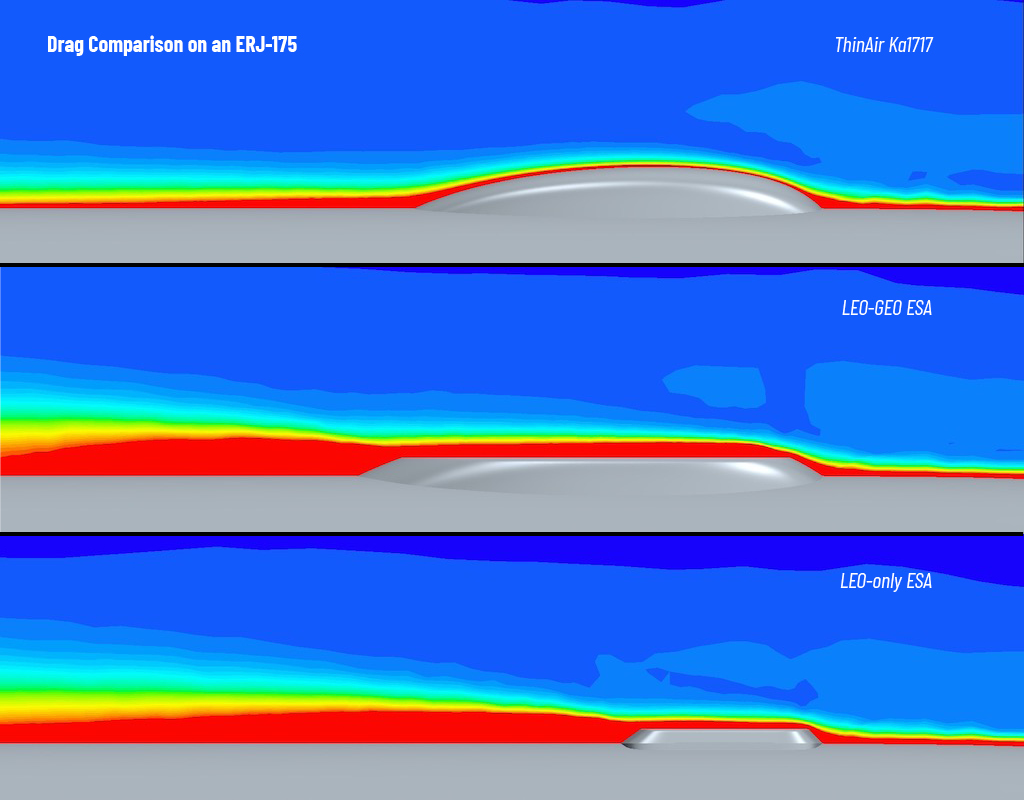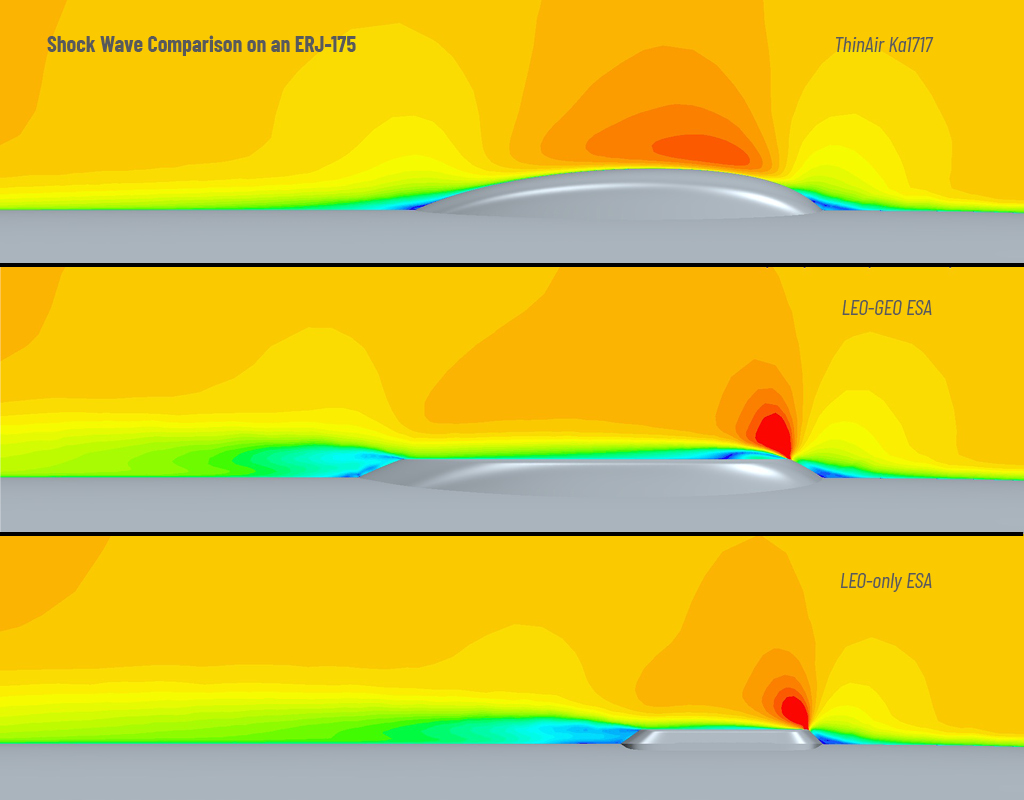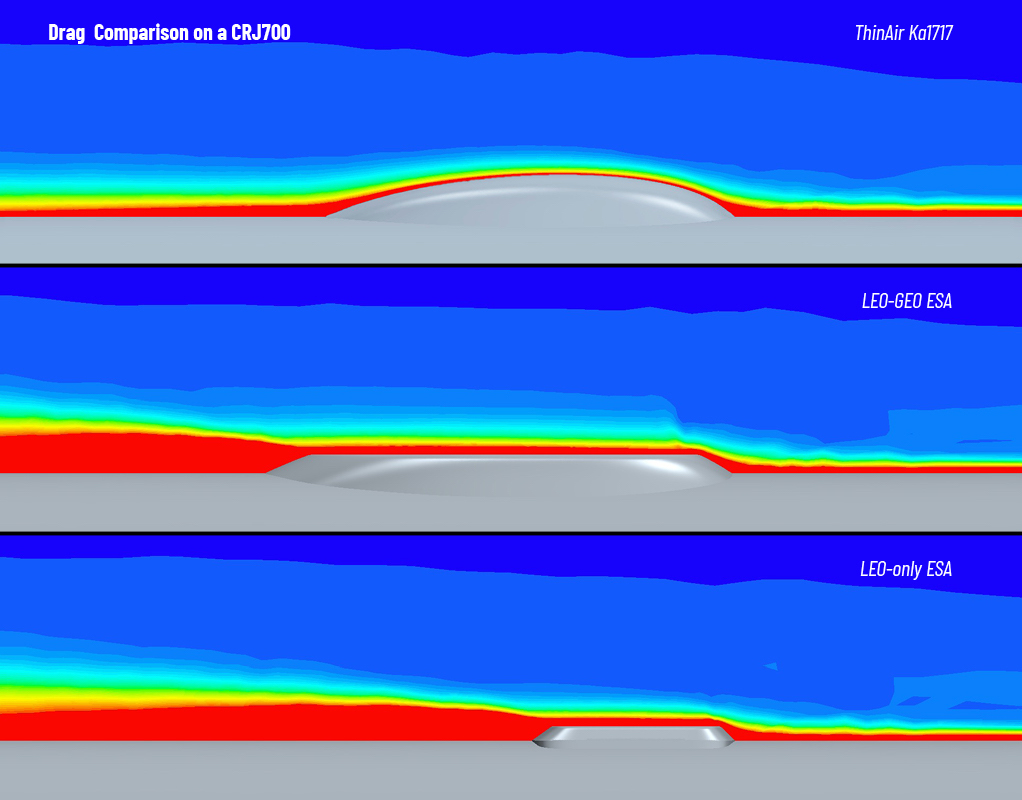Is your ESA overweight baggage?

Common sense suggests that a lower profile atop the fuselage is key to minimizing the drag impact of antenna installations. So it is counterintuitive that a slightly taller radome is much more efficient than a flat-top electronically steered antenna (ESA). But the numbers do not lie.
ThinKom contracted with David Lednicer of Aeromechanical Solutions in Redmond, WA to perform computational fluid dynamic (CFD) analysis of the Ka1717 antenna on the ERJ-175 and the CRJ700, two leading aircraft types in the regional jet market. Similar analysis was performed using publicly available data of representative ESA antenna systems promoted in the market today.
The results show that the streamlined shape of ThinKom’s Ka1717 radome reduces drag by 75-90%, removing as much as 400 pounds of increased cruise weight penalty as compared to ESA designs. That adds up to millions of dollars in extra fuel expense and tens of thousands of tons of excess carbon dioxide (CO2) emissions over the life of the aircraft, even for a modest size fleet.

The dramatic drag increase from flat-top ESAs comes from their sharp edges and flat surfaces. Rather than facilitating efficient aerodynamic flow across the radome, these features – while lowering the profile – increase turbulence and create shock waves.
Without a smooth transition from the turbulent boundary layer of air flow back to the fuselage, an air cavity is created. This flow separation delivers a retardation force on the surface and trailing edge of the installation, increasing drag on the airframe.

Moreover, the problem does not disappear with the much smaller installation of a LEO-only ESA. Indeed, the Ka1717 shows a 90% reduction in drag penalty on the CRJ700 compared to both the LEO-GEO ESA and the smaller LEO-only ESA installations.

Flat-top ESA radomes serve a critical cooling function for their system. Many ESAs, particularly larger LEO-GEO ESAs, consume significant power as they transmit and receive data (a different – and also notable – challenge for them). This power converts to heat, which is convectively transferred directly from the flat surface to the airstream. Adopting a curved radome over the ESA would resolve the poor drag performance, but would also trap that heat inside the radome, further complicating the already inherent thermal challenges.
Drag is, of course, just one component to consider when selecting inflight connectivity hardware. But when it comes to the radome, choosing a flat-top surface can be a real drag.
More information on how the Ka1717 compares to ESAs is available here.
About ThinKom
ThinKom Solutions, Inc., is a leading provider of innovative, ultra-low-profile broadband antenna solutions for commercial and business aviation applications, delivering fast, resilient, and reliable connectivity “from every orbit to every seat.” The ThinAir® product line delivers compact, affordable Ku- and Ka-band options suitable for installation on planes ranging from business jets to super-jumbos. ThinAir antennas consume less power while delivering high spectral efficiency, reducing recurring satellite costs. Packaged in a low-drag design to save fuel and reduce emissions, ThinAir’s proven, proprietary, patented solutions are trusted by leading inflight connectivity providers and airline customers around the globe.















































![Why [Some] Inflight Connectivity Antennas are Playing Catch-Up](https://cdn.prod.website-files.com/65a15c46b894137fbdeef78e/65cd7fb7dc412416d359bec9_aviation-week-network-.png)










































